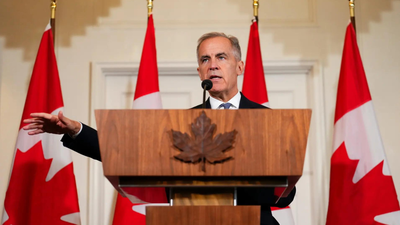Key Takeaways
- Canada’s inflation rose to 2.4% in September, driven by food prices and shelter costs
- Core inflation remains elevated with CPI-median at 3.2% and CPI-trim at 3.1%
- Mark Carney confirms intensive US tariff talks amid economic pressures
- Bank of Canada expected to cut rates later this month to support slowing economy
Canada’s annual inflation rate climbed to 2.4% in September, exceeding analyst expectations as rising food prices and persistent shelter costs pushed consumer prices higher. The increase comes amid ongoing trade tensions with the United States and a weakening domestic economy.
Inflation Breakdown: Food and Shelter Lead Price Pressures
Statistics Canada reported food prices surged 3.8% year-on-year, marking the largest increase since April 2024. Meanwhile, gasoline prices declined less sharply than in the same period last year, contributing to the overall inflation figure.
Excluding gasoline, the Consumer Price Index increased 2.6%. Shelter costs proved particularly stubborn, with rents jumping 4.8% in September and overall shelter inflation reaching 2.6%.
Core Inflation Remains Elevated
Economists highlighted concerning trends in core inflation measures. The CPI-median held steady at 3.2%, while the CPI-trim edged up to 3.1%, indicating broad-based price pressures across the economy.
US Tariff Talks and Economic Impact
Prime Minister Mark Carney confirmed the government is engaged in “intensive” talks with the United States to reduce sectoral tariffs on steel, aluminum, and energy. These tariffs have significantly affected Canadian businesses and consumers.
Although approximately 85% of cross-border trade remains tariff-free under USMCA, former President Trump’s global tariffs have pressured key sectors, leading to job losses and higher input costs.
Carney expressed cautious optimism about potential breakthroughs in steel and aluminum negotiations but noted US auto tariffs remain a substantial risk for Canada’s economy.
Bank of Canada Policy Outlook
The inflation data arrives ahead of the Bank of Canada’s policy meeting later this month. Money markets indicate a strong probability of a 25-basis-point rate cut to 2.25%, aimed at supporting the slowing economy.
Analysts emphasize that despite persistent inflationary pressures, the Canadian economy requires monetary support, creating a challenging balancing act for policymakers.
Consumers and businesses continue to feel the combined impact of inflation and trade measures. Canadian grocery stores, heavily dependent on US imports, have raised prices in response to tariffs, while broader sectoral measures have amplified costs across steel, aluminum and automotive industries.




